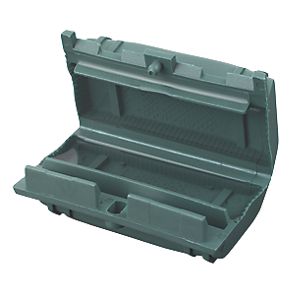During the storms a while back, we had a couple of fence panels blow out, and put a lot of strain on a set of festoon lights as they went - and the lights stopped working. I finally got round to investigating, and it looks like it's broken the joint where the flat festoon cable joins to the round feed-in cable. Simple enough, chop out the moulded joint and re-do it with one of those inline joints. But ...
The festoon cable is rectangular - about 1/8" thick and 1/2" wide (3mm x 12mm for those that don't understand real measurements ), with square edges. That's not going to fit well, or seal well, in any standard stuffing gland.
), with square edges. That's not going to fit well, or seal well, in any standard stuffing gland.
The best I can think of is one of the flat-form glands that Remora do (I've got a couple of 4mm2 ones left over from a job) - but by the time you get anywhere big enough (I think one of the ones I have might do), it's 25mm thread and the inline joints are only 20mm. I'd rather not use something like a Wisker box as it'll stand out like a sore thumb.
Any suggestions on how best to do this joint ?
The festoon cable is rectangular - about 1/8" thick and 1/2" wide (3mm x 12mm for those that don't understand real measurements
The best I can think of is one of the flat-form glands that Remora do (I've got a couple of 4mm2 ones left over from a job) - but by the time you get anywhere big enough (I think one of the ones I have might do), it's 25mm thread and the inline joints are only 20mm. I'd rather not use something like a Wisker box as it'll stand out like a sore thumb.
Any suggestions on how best to do this joint ?


